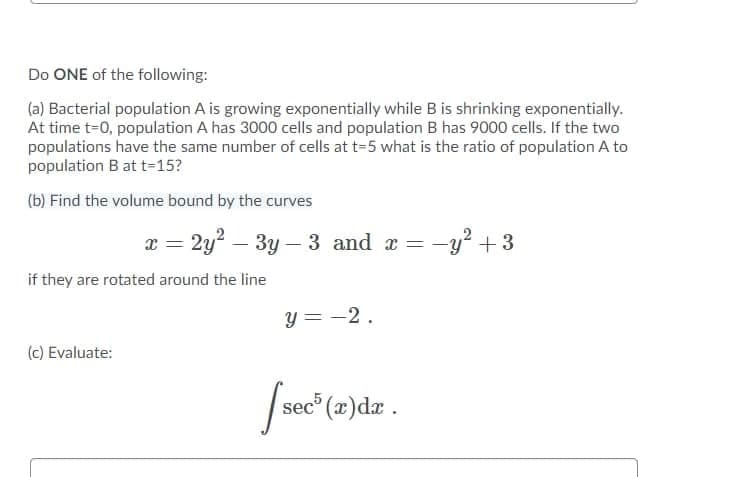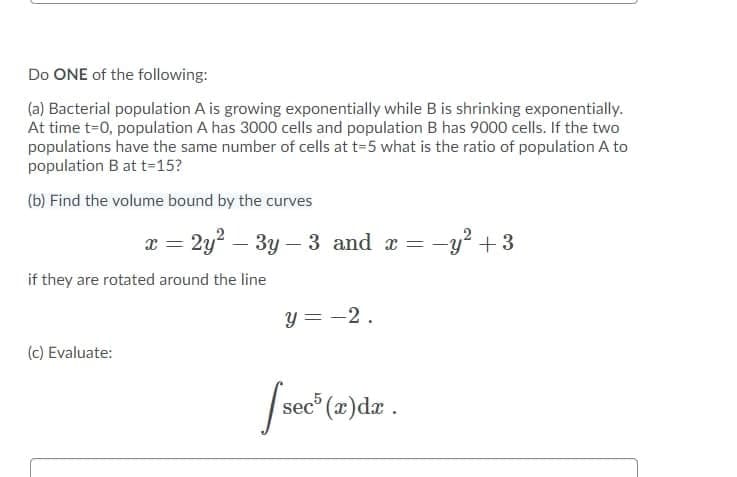(c) Evaluate: sec" (x)dz.
Algebra & Trigonometry with Analytic Geometry
13th Edition
ISBN:9781133382119
Author:Swokowski
Publisher:Swokowski
Chapter5: Inverse, Exponential, And Logarithmic Functions
Section: Chapter Questions
Problem 18T
Related questions
Question

Transcribed Image Text:Do ONE of the following:
(a) Bacterial population A is growing exponentially while B is shrinking exponentially.
At time t-0, population A has 3000 cells and population B has 9000 cells. If the two
populations have the same number of cells at t=5 what is the ratio of population A to
population B at t=15?
(b) Find the volume bound by the curves
x = 2y? – 3y – 3 and a =
= -y? +3
if they are rotated around the line
y = -2.
(c) Evaluate:
/sec" (a)dz .

Transcribed Image Text:Do ONE of the following:
(a) Bacterial population A is growing exponentially while B is shrinking exponentially.
At time t-0, population A has 3000 cells and population B has 9000 cells. If the two
populations have the same number of cells at t=5 what is the ratio of population A to
population B at t=15?
(b) Find the volume bound by the curves
x = 2y? – 3y – 3 and a =
= -y? +3
if they are rotated around the line
y = -2.
(c) Evaluate:
/sec" (a)dz .
Expert Solution
Step 1
(c)
reduction formula for sec x is given as,
where
taking
Also can be resolved in the same way as
Plugging this value above
Further,
Step by step
Solved in 2 steps

Recommended textbooks for you

Algebra & Trigonometry with Analytic Geometry
Algebra
ISBN:
9781133382119
Author:
Swokowski
Publisher:
Cengage

Algebra & Trigonometry with Analytic Geometry
Algebra
ISBN:
9781133382119
Author:
Swokowski
Publisher:
Cengage